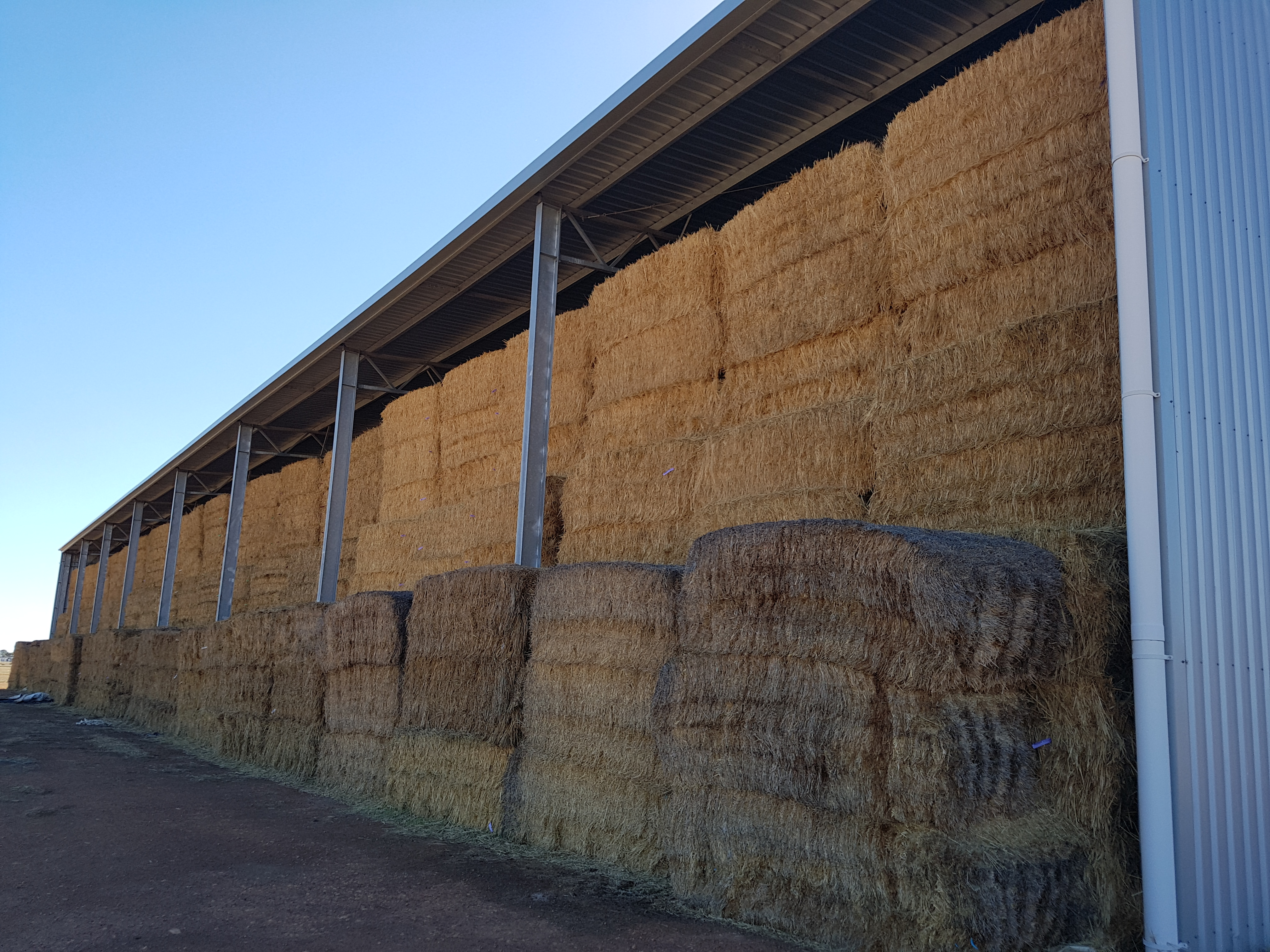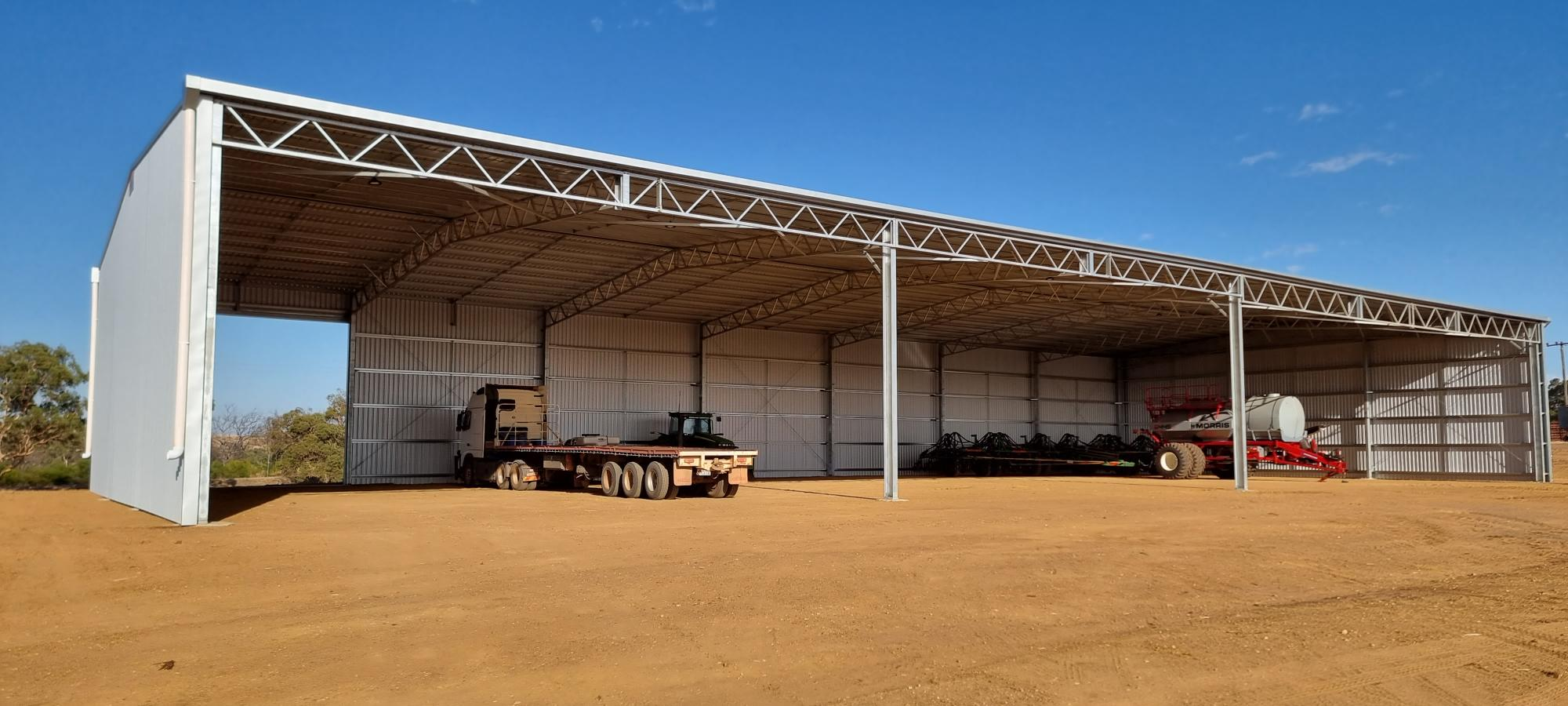
Organising a farm shed build is an exciting venture, marking a significant step in streamlining your agricultural operations and adding value to your property. Whether you’re looking to store machinery, shelter livestock, or establish a workshop, a well-designed farm shed can serve multiple purposes. However, before you jump into the construction process, there are several key considerations to keep in mind to ensure your building is functional, durable, and meets all your requirements. In this article, we’ll walk you through the essential factors to ponder when organising a farm shed build.
Farm Shed Sizing, Material and Location
Farm Shed Sizing: The Cornerstone of Functionality
When determining the size of your farm shed, your primary guide should be its intended purpose. If the shed is intended for machinery storage, ensuring it can house your largest equipment with adequate clearance in the openings, with consideration for future additions is important. Likewise, for those looking to shelter livestock, space for feeding, bedding, and ease of movement is paramount. Moreover, the internal layout requires careful planning. Think about additional structures you might need, such as storage racks or workbenches for a workshop settling, pens and stalls for animals. And remember, farms evolve, and so do their needs. Planning a shed with a view to future expansions can save you significant time and resources compared to later modifications or constructing a new one altogether.
Material Selection: Balancing Aesthetics and Durability
The materials you choose can dictate both the appearance and longevity of your farm shed. There’s no doubt steel sheds provide durability and pest resistance. Your roofing choice is pivotal too. Popular options like zinc and colour sheeting are not just durable but can be matched to your farm’s colour scheme. And for flooring, always consider the required compaction when doing the earthworks and load it will bear. While heavy machinery may necessitate reinforced concrete, livestock areas could benefit from more permeable surfaces like gravel or dirt for effective drainage.
Location: More Than Just a Spot on the Ground
The site of your shed plays a critical role in its functionality and longevity. First and foremost, accessibility is key. Your shed’s location should allow for easy access, whether you’re driving large machinery, herding livestock, or simply fetching materials or tools. Consider how this access might be affected across seasons. Orientation, too, can make a significant difference. In warmer climates, a specific orientation may assist in reducing excessive heat, whereas in colder regions, capturing maximum sunlight may be more beneficial. Facing the shed away from the prevailing weather conditions should be considered, this will vary depending on your location. Drainage is another concern; it is important to always ensure your shed is positioned to avoid water pooling and be mindful of where runoff water is directed. Lastly, never forget the legalities. Always check local regulations, as there might be rules dictating how close your shed can be to property boundaries, water sources, or other existing structures.
Building Permits and Exemptions
In Western Australia, securing a building permit is a crucial step before constructing a farm shed, regardless of its perceived risk or size. While some small or specific structures might bypass the need for a permit, it’s essential to verify this with your local council. Relying on presumptions can lead to complications, so always prioritise official guidance.
Zoning, Land Use, and Purpose
Land use in Western Australia is underpinned by local planning schemes. Before embarking on your shed project, familiarise yourself with your property’s zoning. This knowledge will determine if you can legally build a farm shed and what conditions might apply. For properties zoned as agricultural, sheds meant for agricultural purposes typically face fewer hurdles. However, diversions from the intended land use may necessitate extra layers of approval.
Size, Setbacks, and Property Layout
The dimensions of your farm shed, and its positioning hold significant regulatory weight. Many local councils dictate size constraints based on the acreage and zoning of your property. Furthermore, regulations concerning setbacks – the distance between your shed and boundaries, existing structures, or natural features – are also prevalent. Every local council might have nuanced setback requirements, making direct consultation with them indispensable.
Before you start constructing a farm shed in Western Australia, ensure that you’ve done accurate comprehensive research or consulted with professionals familiar with local regulations. Your local council or shire is often the best starting point for accurate and up-to-date information on permits and regulations. Always adhere to these regulations to ensure your shed is legal, safe, insurable, and fit for purpose.
What (if Any) Tax Deductions Am I Eligible For?
When you’re considering building a farm shed, understanding the tax implications and potential deductions is vital. However, keep in mind that tax laws can change, and it’s essential to consult with a local tax professional or accountant familiar with agricultural tax codes for the most accurate and up-to-date information. Here are some general considerations for tax deductions related to building a farm shed:
- Capital Works Deduction: Farm sheds are typically considered capital assets. In many tax jurisdictions, you can claim a deduction for the structural costs (capital works) over a period of time, known as depreciation. The rate and period of depreciation can vary based on local tax laws.
- Immediate Deduction for Assets: Some jurisdictions may allow farmers to immediately write off the cost of certain assets, including farm infrastructure like sheds, up to a specified limit.
- Repairs and Maintenance: While initial construction costs might be capitalised and depreciated over time, the costs for repairs and maintenance of the shed can often be claimed as an immediate deduction in the year they are incurred.
- Interest on Loans: If you took out a loan specifically to finance the construction of your farm shed, the interest on that loan can typically be deducted as a business expense.
- Professional Fees: Costs related to legal, architectural, engineering, or other professional services necessary for the construction of the shed can potentially be deductible. This can include fees related to obtaining permits or ensuring compliance with regulations.
- Utilities Installation: If you had to set up utilities like electricity, water, or phone lines specifically for the shed, those setup costs might be deductible.
- Insurance: The premiums you pay for insuring the shed against potential damage might be deductible as a business expense.
- Land Preparation: Costs related to preparing the land for your shed, such as levelling, clearing, or soil testing, might also be deductible, although they could be treated differently from the shed itself.
It’s essential to keep detailed records of all expenses related to the construction and maintenance of your farm shed. This documentation will be invaluable when it’s time to file your taxes or if you ever face an audit. Moreover, tax incentives and deductions can vary depending on your specific jurisdiction within Australia, so always refer to the Australian Taxation Office (ATO) guidelines or consult with a local accountant for precise information.
How Long Do Farm Shed Builds Take, and What Sort of Costs Should I Be Expecting?

Constructing a farm shed can be a significant investment in terms of both time and money. The duration and cost of building can vary widely based on numerous factors, including, council approvals, size, materials, design complexity, location, labour rates, and more. Here’s a general insight into the timeline and potential costs associated with farm shed builds:
1. Duration of Farm Shed Builds:
- Size and Complexity: Naturally, a larger or more complex shed will take longer to construct on site. A small, basic storage shed could be completed in a matter of days, whereas a larger, more specialised building, such as a machinery workshop or shearing shed with livestock facilities, could take several weeks to a few months. Typically, the timeframe from ordering a shed to when it is built ranges from 2 to 6 months.
- Preparation and Approvals: Before construction starts, there’s the period of planning, securing necessary permits, and preparing the site. This phase can sometimes be as long (if not longer) than the actual manufacturing and construction phase, especially if there are delays in getting approvals or if the site requires significant preparation.
- Weather and Seasonal Factors: Construction timelines can be affected by weather conditions. Rain, extreme temperatures, or other adverse conditions can delay progress.
- Availability of Materials and Labour: If there are shortages of specific materials or if specialised labour is hard to come by; it can extend the build time.
2. Cost Considerations for Farm Shed Builds
- Location and Wind Region: Shed costs can vary depending on your location and the wind region of the build. Sheds built in cyclonic regions required significantly more engineering and steel than non-cyclonic regions.
- Labour Costs: Labour costs can vary depending on your location and the complexity of the build. Some regions might have higher labour rates than others.
- Foundation and Flooring: The type of foundation you choose can impact costs. A simple gravel floor will be less expensive compared to a reinforced concrete slab.
- Customisation and Features: Additional features like electrical wiring, plumbing, insulation, ventilation systems, or specialised doors and windows can add to the overall cost.
- Site Preparation: Costs associated with levelling land, removing obstacles, or even transporting materials to a remote location can add up.
- Permits and Fees: Don’t forget to factor in the costs of obtaining necessary permits, inspections, or any other associated fees.
- Contingency Budget: It’s wise to set aside a contingency budget to cover unexpected expenses or changes to the plan.
Farm shed builds, like any construction project, require thorough research and planning to gauge time and cost accurately. While it’s tempting to look for shortcuts or opt for the most economical choices, remember that a farm shed is a long-term investment. Prioritise quality and functionality to ensure the shed serves its intended purpose efficiently for years to come.
With an Array of Customisability, All Roads Lead Back to What You’d Want As the Shed Owner
When planning a farm shed build, a multifaceted approach is essential. Begin with understanding local regulations, especially in regions like Western Australia, where permits and zoning play a pivotal role. Align your shed’s size and design with its primary function, whether that’s housing machinery or sheltering livestock, while also considering future needs. Your choice of materials not only affects aesthetics but also long-term durability and maintenance. Budgeting should encompass not just construction costs but also potential tax deductions, professional fees, and site preparation. Moreover, consider the duration of the build, which hinges on factors like complexity, weather, and material availability. Lastly, recognise that this shed is a long-term investment – prioritise quality, seek expert advice, and always keep an eye of future expansion or modifications. By addressing these elements, you’ll ensure your farm shed is not only functional but also a valuable asset to your agricultural endeavours.
Choosing AUSPAN for your next agricultural shed build

In choosing AUSPAN for your next agricultural shed project, you're selecting a leader in custom shed solutions renowned for their commitment to quality, reliability, and innovation. With AUSPAN, you benefit from a team that deeply understands the unique demands of the agricultural sector, offering tailored designs that align perfectly with your specific needs. Their use of top-grade materials ensures long-term durability, while their expertise in navigating Australia's diverse climates and landscapes guarantees a shed that stands the test of time and elements. Their streamlined process, from initial design to final construction, emphasises efficiency and minimises disruption, allowing you to focus on your farming operations with peace of mind. In short, AUSPAN combines industry-leading expertise with unparalleled customer service, making us an ideal partner for constructing a farm shed that's not just a structure, but a strategic asset for your agricultural enterprise.
 sales@auspangroup.com.au
SEND US A MESSAGE
sales@auspangroup.com.au
SEND US A MESSAGE
 1300 271 220
CALL US
1300 271 220
CALL US




-1.png)